When a college student got lost in Yosemite and the local Search and Rescue team was unable to find him, the Marin County Search and Rescue team was called onto the scene.
“This dude had climbed up a cliff, fell 70 feet down the cliff onto a hard rock, where he then rolled an addition 100 feet down a slope,” said senior volunteer Lauren Knott. “When we found him he had been there for a couple of days and was barely awake. He had a bone sticking out of his leg and one of his eyes was swollen shut. We could barely tell who he was.”
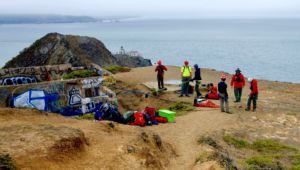
Just as they had practiced extensively in trainings, members of the Search and Rescue teams expertly bandaged the man up and got him into an ambulance where he was transported to a hospital.
“If we had found him 20 minutes later, I don’t know if he would be alive,” Knott said. “I remember talking to his family afterwards and they were crying and really emotional and really happy that we had found him.”
A branch of the Marin County Sheriff’s Department, the Search and Rescue team attends searches across Marin and the rest of California looking for people who have gone missing.
Comprised of roughly 95 volunteers, a third of whom are youth members, the team’s volunteer work saves the county more than $3 million annually in funds that would otherwise have to be paid to law enforcement or medical professionals, according to senior volunteer Gracy Buckholtz. In 2016 alone, the Marin Search and Rescue team attended 65 searches, 22 of which were in Marin.
However, the team does much more than just searching for missing people, according to Knott.
“Sometimes we’re looking for bullet casings or blood spots after a murder. For example, I’ve gone to Marin City to look for that kind of stuff after homicides,” Knott said.
In addition, the team serves as an asset to the community during emergencies. During the heavy rains over the past few weeks, volunteers put sandbags around houses and helped evacuate people from their homes, according to Knott.
“If there was ever an earthquake or something, we would be helping rebuild things or evacuating people, just like the firefighters and police department,” Knott said.
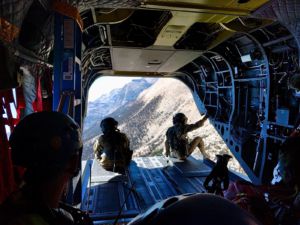
During the Bridge Together Golden Gate movement on the Golden Gate Bridge on Jan. 20, members of the Search and Rescue team were present to make sure that everyone was safe.
The Marin Search and Rescue team is one of few programs that allow youth volunteers to have the same responsibilities as adult members, according to senior volunteer Dosym Kunhardt.
The process of joining Search and Rescue reflects the demanding nature of the team, only accepting 15 of roughly 30 people who apply each year, according to Buckholtz, who joined the team her freshman year.
Buckholtz said that she knew she wanted to join Search and Rescue since she began attending Search and Rescue events at age 11 with her father, who is also on the team.
Prospective volunteers must fill out an application which includes writing an essay about themselves and sharing any outdoor, medical or previous volunteer work experiences. Applicants are then interviewed by four or five current Search and Rescue members and must then pass a thorough background check and a lie detector test.
“We ask [applicants] questions based around their character and how they would handle different situations,” said Buckholtz, who has served a youth representative on interview panels. “We will also give them some scenarios, like ‘If you were hiking with a friend and they sprain their ankle and you don’t have any cell service, what’s your next plan of action?’”
After being admitted to the team, new members undergo “Bootcamp,” an intensive one-month training program that tests new members’ physical abilities. According to Knott, new volunteers are taught skills including search procedures, ropes usage and basic medical training.
In addition, new members must complete an Emergency Medical Responder course, which is the highest level of medical training that a minor can receive. Members must also undergo two Incident Command System courses where they learn how emergency systems work and the hierarchy of emergency logistics, according to Knott.
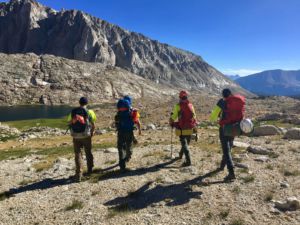
Once on the team, volunteers can sign up to attend additional trainings throughout the year, including advanced rigging training, winter training and mapping classes. Volunteers can also undergo extra training to certification to attend Type One and Two searches, which usually occur in more rugged and demanding environments, according to Knott.
“For my Type One training test, I had to hike from Mill Valley to the top of Mt. Tam in under three hours while carrying 25 pounds on my back,” Knott said.
As a result of how much training it takes to become a member of the team, Search and Rescue prefers to accept applicants who are freshmen or sophomores, since they will not be going away to college for a few years, according to Buckholtz.
Out of the team’s 31 youth members, 10 are Redwood students. According to Knott, the youth members are all very close to one another due to how much time they spend together and how they much they rely on each other for emotional support during searches.
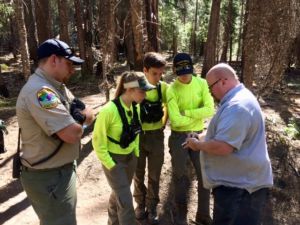
Though the majority of searches result in the person being found alive, it is still common for rescuers to find a victim deceased or to not find them at all, according to Buckholtz.
“We are all very close because we have to go through crazy stuff together,” Knott said. “Like we will go on a search for a missing two-week-old infant together and when the infant is found dead, you don’t really have a choice but to rely on your teammates for moral support.”
The team offers counseling services to members if additional support is requested, according to Buckholtz.
“A few years ago there was a search for a girl who had autism and she ended up drowning,” Buckholtz recalled. “That search ended up really affecting people, but nobody has quit the team [as a result of the emotional stress] because there is a really strong support network in the team.”
Search and Rescue members must be prepared to be called out on searches at all times. Attending searches during school hours are an excused absence, according to Kunhardt.
“The most difficult part of Search and Rescue for me is having to wake up in the middle of the night to attend searches,” Kunhardt said. “It’s also hard having to balance school work and the huge time commitment required by [Search and Rescue].”
In addition to the time spent on searches and training trips, the Search and Rescue team meets every other Monday at the Sheriff’s Department to review various skills for specific rescue scenarios. Prospective volunteers are encouraged to attend at least two of these meetings prior to applying to join the team.





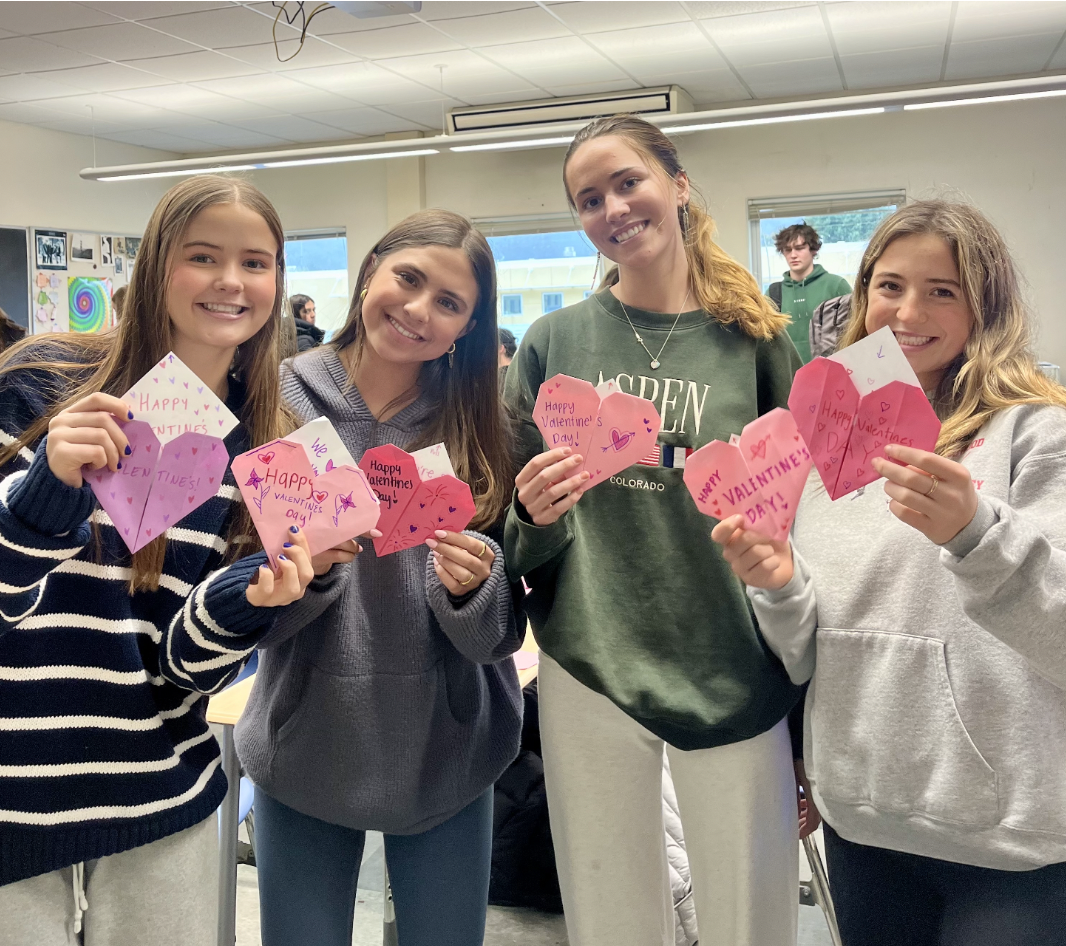
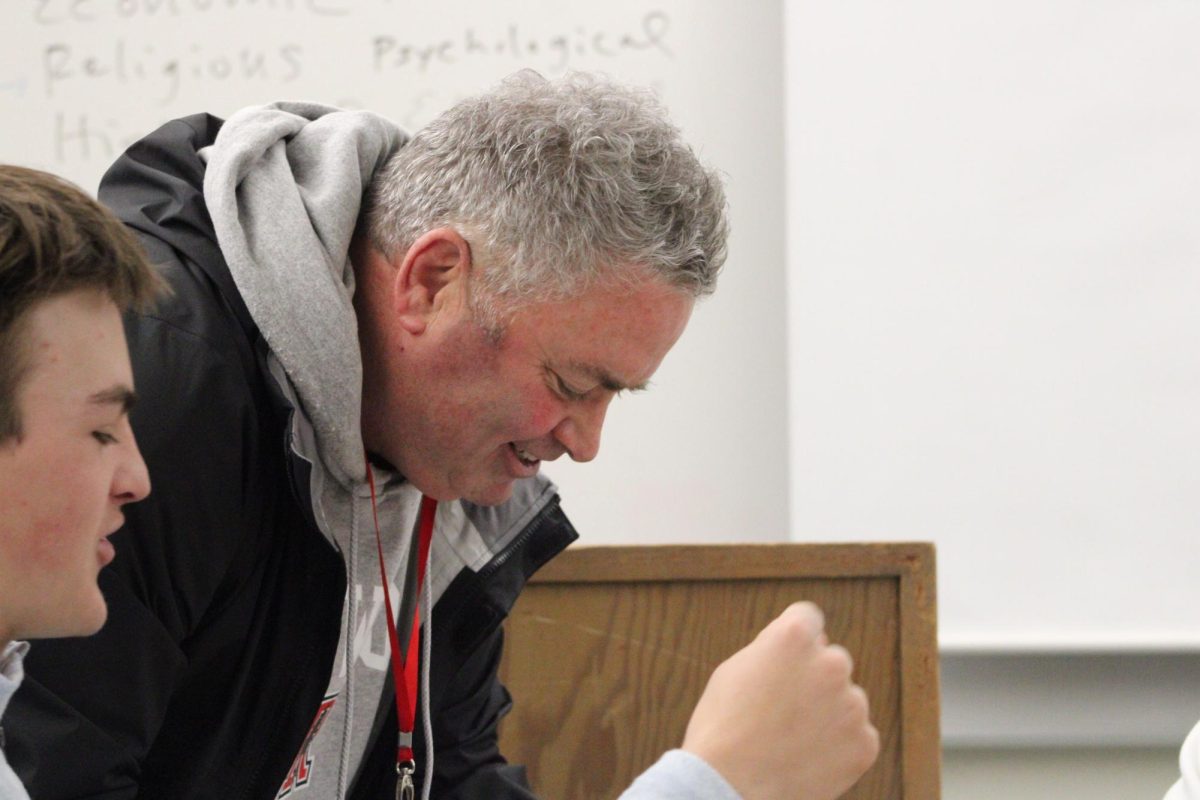
!["I knew I wanted to be a writer. I wasn't a good student [at Redwood], but I wanted to be a writer, and I wanted to paint. I'm self-taught in all of it, which gave me an original voice," Paige Peterson said. (Photo courtesy of Paige Peterson’s website).](https://redwoodbark.org/wp-content/uploads/2025/02/ppeterson.png)



